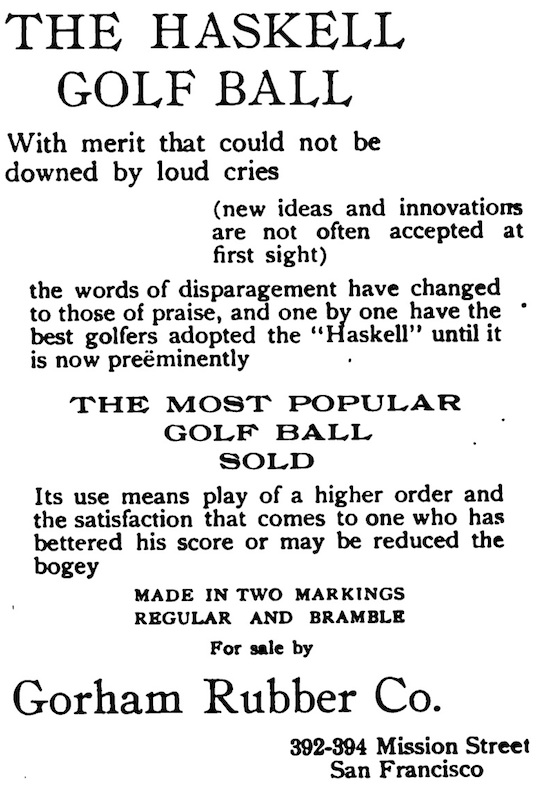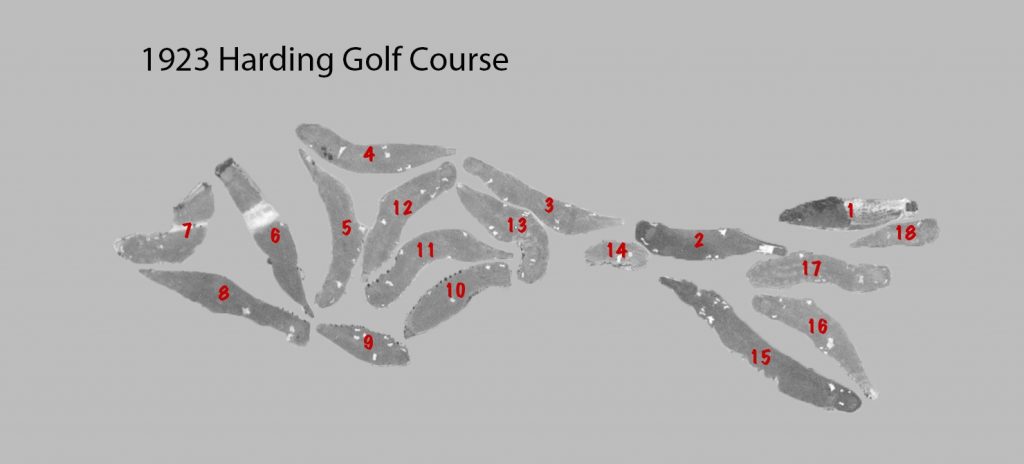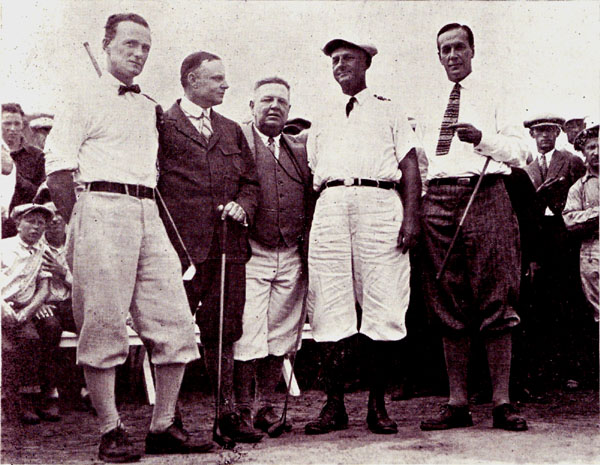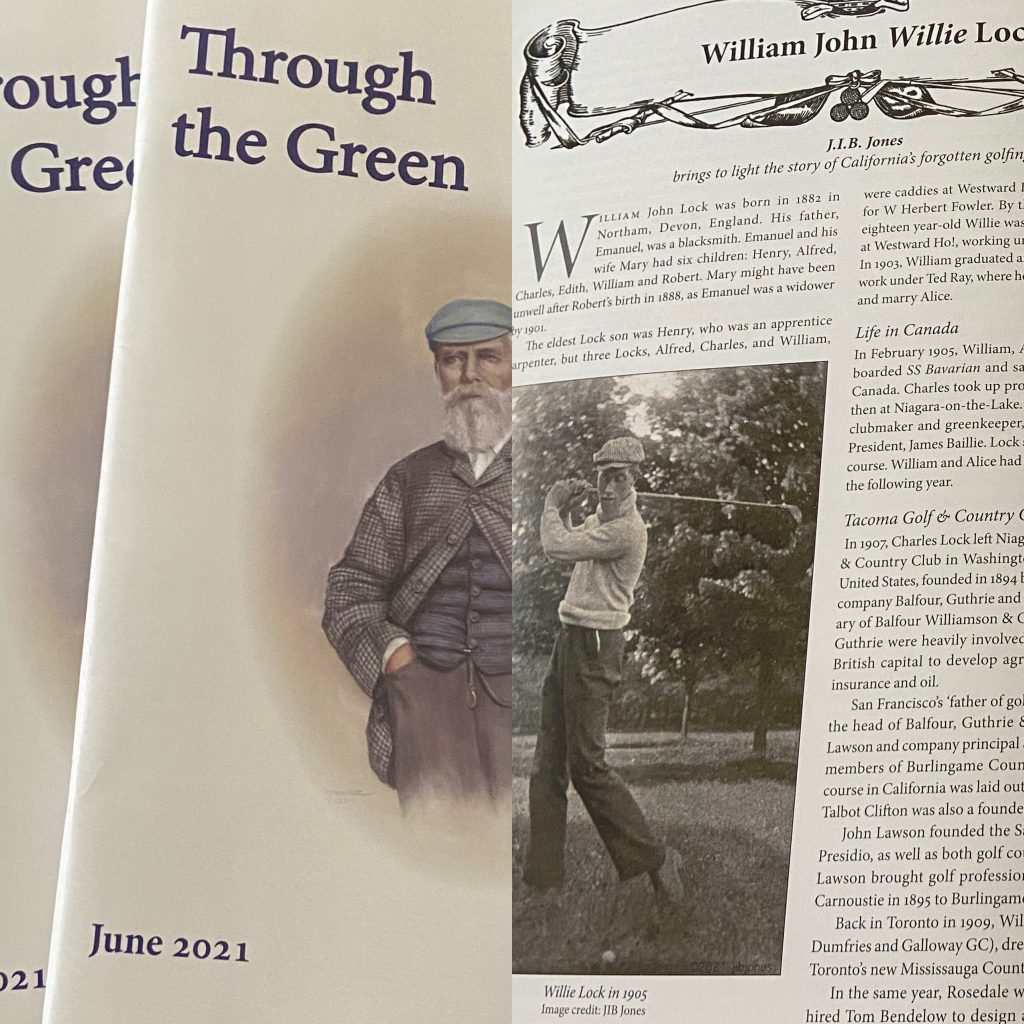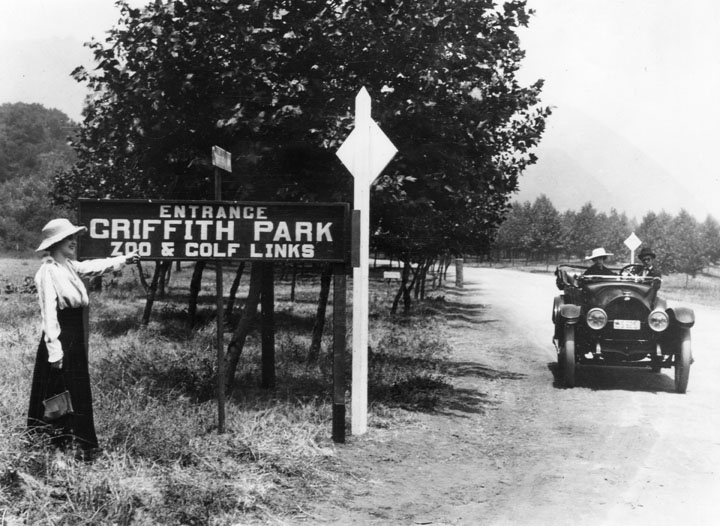
Griffith Park was donated to the city of Los Angeles by Griffith Jenkins Griffith and his wife Christina Mesmer Griffith at Christmas of 1896. This November 13 the Recreation and Parks Department are celebrating the 125th anniversary of that gift.
The first Griffith Park municipal golf course, No. 1, opened on November 1, 1914, with the support of members of the Los Angeles Country Club and the Southern California Golf Association. It was a sand green links designed by golf legend Tom Bendelow and was located under Wilson #1,2,18, and Harding #17 and 18, west of the old city water pipe.
The old links were much loved by the country club crowd. They were also the site of many a film star hitting balls between takes. Griffith Park was location #1 in the late teens! Many athletes, celebrities, and other sports stars visited Los Angeles in the winters. Babe Ruth even signed his Yankee contract while playing Municipal No. 1 in 1920.
In 1923 George C. Thomas Jr., designed new municipal, No. 2, Harding Memorial, and in 1927 the Wilson Memorial, both all-grass golf courses. Nine holes of the old sand course, which are now part of the Zoo, were kept, and grassed-over in the 1930’s, and renamed the Roosevelt Memorial Golf Course.
In the early 1930s, superintendent of golf, William Johnson, and architect William P. Bell, modernized the courses using Federal Works money, installing irrigation and building the current clubhouse by 1936. It replaced the English style field house of 1918. Both Wilson and Harding courses were used for the L.A. Opens of 1937-1939.
After the great flood of 1938, the L.A. River was channelized to protect the park from flood damage. The county road was built in the 1920s along the river bank, and their “right of way” became the battle over the 5 Freeway in the late 1950s. The golf holes along the county road were taken during construction, but the land was returned afterward, with new holes designed to replace them.
Later, Wilson lost three more holes that became the Crystal Springs picnic area. There is also an old par 3 that had been the 18th and then the 16th hole on Thomas’s Harding, located between the 1st and 17th holes, which was abandoned in the 1950s.
In the early 1960s the city of L.A. wanted a new Zoo, and decided to replace the old Roosevelt golf course. The uproar caused the construction of the new Roosevelt golf course in Vermont Canyon, which was built to replace the historic remnant of the original 1914 Municipal No. 1. Both courses were open on the same day in 1964, after which the turf grass from the old course was spread around the city’s other courses.
Griffith Park was also home to the Coolidge Memorial course, now called the Tregnan Academy, the Los Feliz driving range and Par 3 course, and the nine-hole putting course on the second floor of the Griffith Park Bath House.
Los Angeles Recreation and Parks should be very proud of their accomplishments, having turned the original 18-hole sand course into a golf system that today has twelve courses that have been funded by the receipts from Griffith Park and later Rancho Park.
Come out on the 13th of November and enjoy the beautiful gift of the park and all of the awesome facilities that we in Los Angeles are so proud to have!
©2021 jib jones – golfhistoricalsociety



